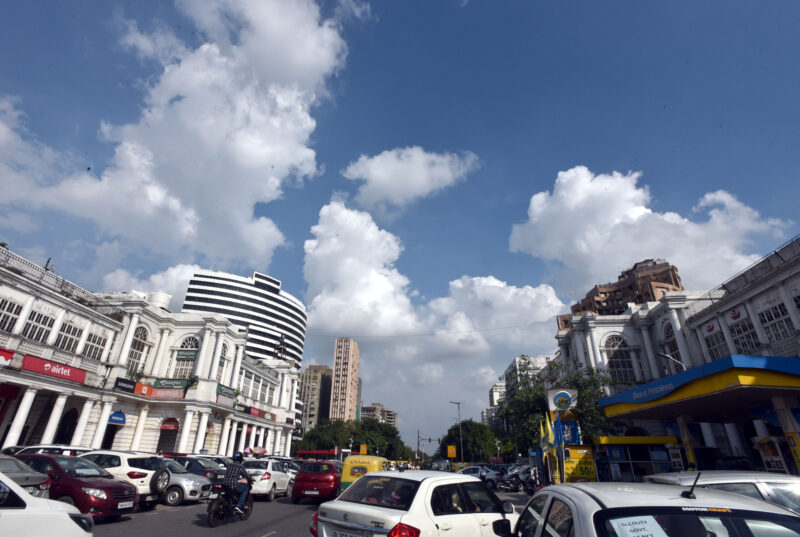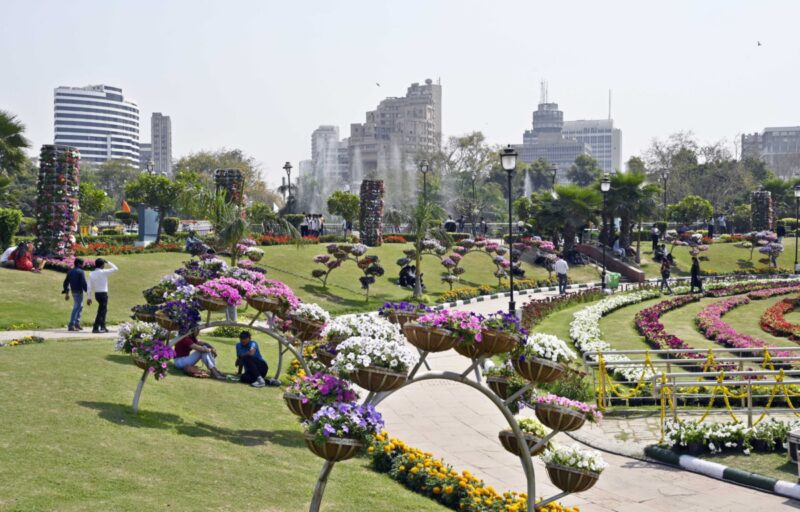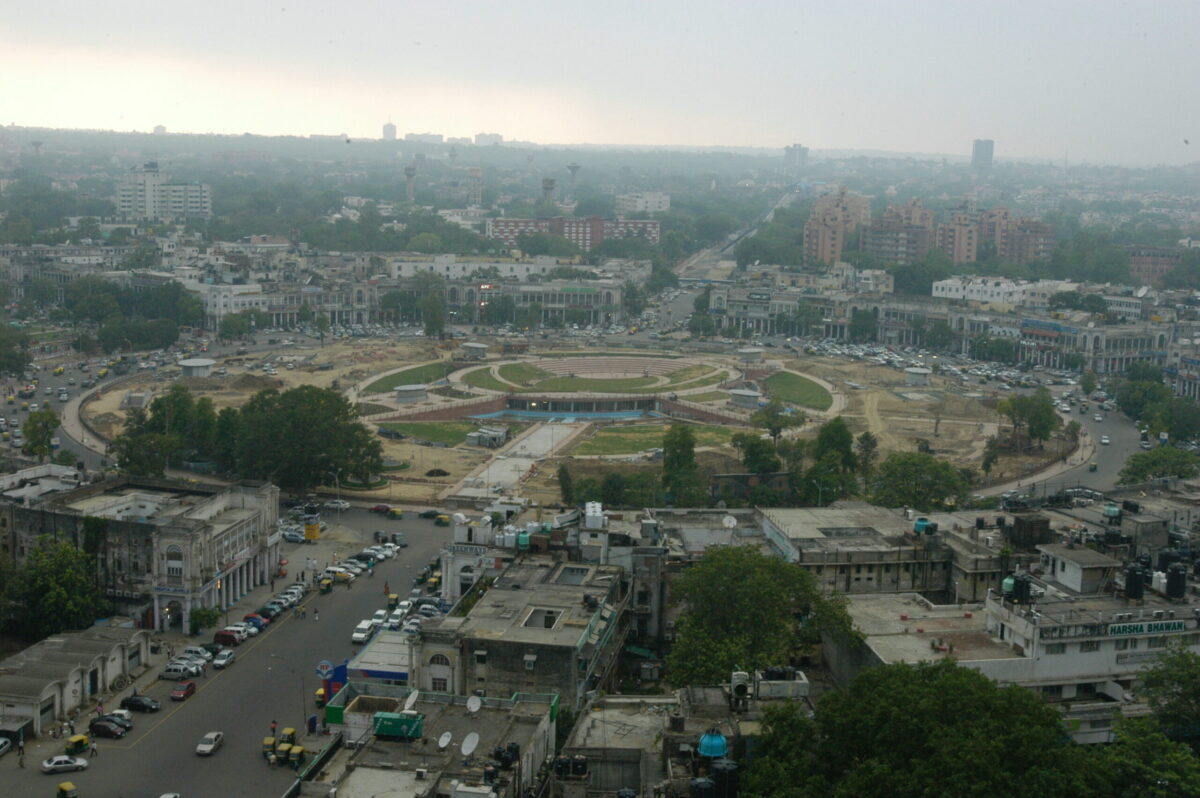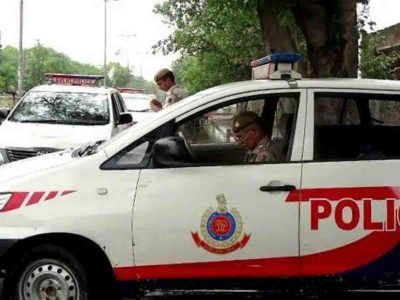When the celebrated architect Robert Tor Russell was working day and night on the design of Connaught Place, he would not have thought even remotely that his creation would become the most iconic symbol of Delhi a century later.
It was 1917 when Russell had submitted his drawings for the would-be Connaught Place to his boss Edwin Lutyens. Those were the days when the First World War was on. Understandably, the British government was not in a tearing hurry to build a shopping place with couple of picture halls where Delhi-based whites or elite Indians could go and relax for obvious reasons.
Naturally, the British government was concentrating more on war than anything else. Till then, the present-day Connaught Place had a couple of villages like Madhoganj, Jaisinghpura and Raja Ka Bazar.
While you would not find traces of either Madhoganj or Jaisinghpura, Raja ka Bazar is now known as Raja Bazar and life there looks pretty close to that in any urbanised village.
Of course, you would not see any farming there, but the residents refuse to merge with the modern Connaught Place. Life inside the Jain Temple of Raja Bazar would evoke memories of life in some small town.
As the World War 1 came to an end in 1918, the British government once again started putting efforts in building Connaught Place.
Named after the Duke of Connaught, its construction started in 1929 and was completed in 1933. In that very first year, some shops were occupied.

Connaught Place represents diversity and as someone who has worked and lived here for 50 years and written a book on it — Dilli Ka Pehla Pyaar, Connaught Place, I can vouch for that.
That makes it a very special and happy place.
There were also several British, Irish, Swiss and Chinese shopkeepers during the early years of Connaught Place.
For instance, Delhi’s favourite shop for pastries, cakes and patties, Wenger’s, was started by a Swiss couple.
Wenger’s was established in the year 1924 as a catering outfit for the British troops stationed in Delhi. In 1926, it was inaugurated as a tea and confectionery shop in Exchange Stores in Kashmiri Gate. Later, it shifted base from Kashmiri Gate to Connaught Place.
The shop next to it, of Kinsey photographer, was owned by a British man. Then there was a shop called ‘Army and Navy’ where the Khadi Gramodyog Bhavan showroom is presently located. Before leaving India after August 15, 1947, the owners of Wenger’s and Kinsey had given their shops to their loyal employees.
Unlike British, the Chinese shop owners were not affected by the events of 1947.
As recently as 1990s, there were almost 10 shops in Connaught Place run by Chinese-origin Indians.
Thankfully, two shops are still there. One is D. Minsen and Company and the other is John Brothers. Both deal in shoes and other leather products.
George Chiu, owner of D. Minsen and Company, “Charles Samion was the first Chinese shoe shop to open in 1933, at F-2 in the then partially readied F Block. The owner was Chung Sam Nian who came to India as a child during Qing dynasty, still sporting long pleated hair, and studied in a Calcutta (now Kolkata) school. He was often taunted by his classmates tugging at his pony tail. He had worked and trained at a famous English-owned shoe factory in Calcutta before venturing to set up shop in the new capital of India.”
Chinese and Tibetans co-existing in CP
Far away from their native places, you would find Chinese and Tibetans doing brisk business here with absolutely no animosity. There is a Tibetan Market at Janpath set up in 1970s for the Tibetan refugees. They owe it to two Mohans — Bhai Mohan Singh of Ranbaxy Pharma and Sardar Mohan Singh of Coca Cola for setting up the market. Actually, both were vice-presidents of New Delhi Municipal Council (NDMC) too and made lot of efforts towards setting up a market run by Tibetan refugees.
Christian priests, associated with the Delhi Brotherhood Society that established the venerable St. Stephens College, too identify with Connaught Place. They celebrate the birthdays of their members with a quiet dinner at the Embassy restaurant.
“This practice is going on for decades. We love Connaught Place as it is the symbol of Indian secularism. It has Free Church and Sacred Heart Cathedral Catholic Church,” says Brother Soloman George, who is a senior member of Delhi Brother Society.
Another example of Connaught Place’s diversity is the very happening Gidney Club of the Anglo-Indian community. It has been there since 1936.
Even Kerala Club is there. Walking through the K Block in Connaught Place, one comes across the signboard of ‘Kerala Club’ — in retro design in both Malayalam and English.
This club has been around since the pre-Independence era, even before Kerala state was officially formed. Climb up the stairs and you can spot ‘Kerala Club since 1939’ written in golden colour. The door opens up to a hall filled with black and brown photo frames of well-known Malayalees.
“It has been the meeting hub of Delhi Malayalees for the past several decades. You can see the picture of CK Nair there. Nair was a Malayalee gentleman and thanks to his untiring efforts, the Delhi Development Authority (DDA) was set up. He won the Lok Sabha elections in both 1952 and 1957 from the outer Delhi constituency,” informs Prof Sakhi John, who teaches in Jamia Hamdard University and is a prominent member of Kerala Club.
Gory incidents of 1942 and 1984
Actually, Connaught Place is witness to two gory incidents of rioting, one in 1942 and then in 1984. If rioters burnt down the shops of whites after Gandhiji’s clarion call ‘Quit India’ in 1942, the shops of Sikhs were looted and burnt by the hooligans after the killing of Indira Gandhi, the former Prime Minister.
Recalls Jitendra Singh Shunty, noted social worker and founder of Shaheed Bhagat Singh Sewa Dal, “I was in Connaught Place area the day Mrs Gandhi was shot dead on October 31, 1984 for personal work. It was around 5.30 in the evening when merchants of death suddenly descended. They were looting and mercilessly beating Sikhs.”
Of course, that was a blot on Connaught Place.
But these two incidents apart, Connaught Place has become an inclusive place for all. While the whites thought of making this as a bastion for only their people, that very repulsive thought had no place in free India.
The markets of CP
Connaught Place is incomplete without talking about Palika Bazar, Janpath Market, Shankar Market, Mohan Singh Place, Yusuf Zai Municipal Market and now the closed Super Bazar. They all came up in 1960s and 1970s and are all integral part of Connaught Place.
All these markets have some very special features. If Palika Bazar is all about clothes, cassettes, electronic gadgets and more, Shankar Market is the favourite of fair sex as it offers them clothes of their choice.
And for all those keen to buy new age jeans within three hours, Mohan Singh Place is there and you cannot miss Yusuf Zai Market if you are a foodie. The famous Kake Da Dhaba is located there.
Foodies delight
Well, Connaught Place is a foodies’ delight. It offers good food for all. There is a plethora of restaurants here like United Coffee House, Embassy, Saravana Bhavan, Berco’s, Zen and Farzi Cafe.
Several cafes are also there. If you love street food of Delhi, it offers matchless choices. For delicious rajma-chawal or kadi-chawal, Jain food is the last word. Further, this stuff can be enjoyed even at various kiosks in and around Tolstoy House to Plaza Bus Stand and near Shankar Market.
For mouth-watering aloo-kachori and bread-pakora, shops outside Hanuman Mandir are ideal.
And for out-of-the-world chaat, one has to visit Shankar Market.
For sweets, Heera, Malik and Tiwari Sweets are there. They all offer unmatched mithai. Alas, the famous Odeon Sweets is no more there.
Centre of attraction
Finally, it would be nothing short of sacrilege if we forget talking about Central Park. Someone has rightly pointed out that ‘children and flower gardens reflect the kind of care they get’.
Nobody can dispute this thought. If you wish to see a well-looked after, manicured and gorgeous park located right in the heart of the Capital, then you should not delay visiting the Central Park in Connaught Place sooner rather than later.

Here lush garden and blossoming flowers give you nice company. The setting looks absolutely breath-taking and enchanting. With greenery and colourful flowers around, it is a wonderful spot to escape the ear-splitting noise of Capital. Sitting on lush green garden of 41,500 sq. metres, Central Park is a bliss that cannot be described so easily.
Surrounded by many skyscrapers, flashing neon lights, and hooting cars, your nerves can quickly sit on edge if it’s your first visit to the fast-paced life of Connaught Place. Luckily, you don’t have to be depressed as there is a green haven to escape.
Think of reading a book here while the gentle fragrance of seasonal flowers gives you a nice feeling. Lucky are those who still find time to read a book in a park. You would spot such blessed bookworms here often. They are oblivious of the world around as they are so engrossed in reading their favourite books. Let their tribe increase thick and fast. With so much in one place, Connaught Place has a special place in the life of every Delhiite. It is after all, Delhi’s first love.





